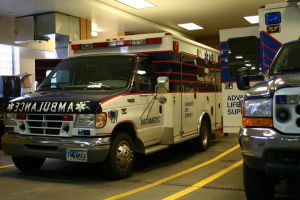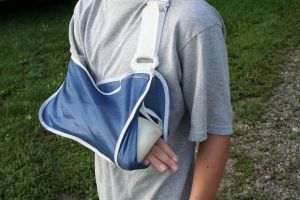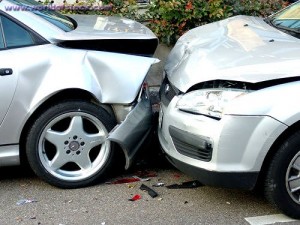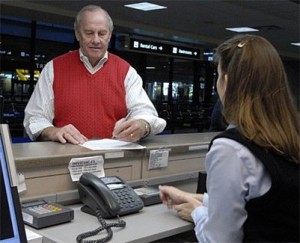Finding Cheap Auto Insurance That Won’t Let You Down
 Most people only want two things from auto insurance. First, they don’t want it to cost too much. And second, they want it to be there when they need it. Finding this might take a little time and effort on your part, but it is worth it.
Most people only want two things from auto insurance. First, they don’t want it to cost too much. And second, they want it to be there when they need it. Finding this might take a little time and effort on your part, but it is worth it.
We can help you jump start your search for FREE coverage; all you have to do is type your ZIP in the box here!
It’s not that hard to find cheap auto insurance. The trick is finding an inexpensive policy that actually covers what you need it to. That’s where doing a little bit of research and spending the time to ask questions can really pay off.
Liability Coverage
Liability insurance is the part of the policy which pays for damages you cause another driver and his or her vehicle. It is also the part required by the state to drive legally.
In this country, the rule of law is that you are responsible for damage that you cause.
If you cause a traffic accident, but don’t have liability insurance, you’ll probably find yourself in court, being sued for the money to pay for the other driver’s medical bills and car repairs.
Thus the states mandate that you carry a minimum amount of insurance so that you have something that can pay for any injury or damage you might cause. However, the amounts the states set, and this number varies widely from state to state, are very low. They might not cover all the expenses from a bad traffic accident.

If you make a small income, rent, have only an old car, and have no savings or retirement, then you might get by with only purchasing the state minimums. After all, even if you get sued you don’t have any assets to worry about protecting.
However, if you own a home, a couple of nice cars, and have some savings and retirement accounts then you need to give some serious thought to how much liability you need. Insurance is there to protect your financial assets in case of a disaster.
As an example, in Pennsylvania, residents only have to have $15,000 in personal injury liability with a total of $30,000 to be paid out per accident. The property liability, the part that pays for repairs or replacing cars, is only $5,000. This amount might get you out of a ticket, but it might not keep you out of court.
 If this is the insurance you have, and you cause an accident that totals a $25,000 car and sends the driver to the ICU, you’re already looking at having to come up with the $20,000 your insurance won’t cover just to replace the vehicle. If the driver is in the hospital long, he or she could easily have more than $15,000 in medical bills.
If this is the insurance you have, and you cause an accident that totals a $25,000 car and sends the driver to the ICU, you’re already looking at having to come up with the $20,000 your insurance won’t cover just to replace the vehicle. If the driver is in the hospital long, he or she could easily have more than $15,000 in medical bills.
If the injuries require $20,000 in medical attention, you now need to come up with $25,000 over what your insurance will pay. Since most of us don’t have that kind of money, you might have to take it out of retirement, or even sell a car or your home, to pay for it.
This is why financial experts suggest carrying a much higher level of liability. The Insurance Information Institute suggests a level of 100/300/50. This would cover most accidents you could possibly be in.
Medical Coverage
 There are two different medical plans you can add to your policy. You can choose one or the other, but not both. In some states, one of these is required along with liability.
There are two different medical plans you can add to your policy. You can choose one or the other, but not both. In some states, one of these is required along with liability.
Medical payments (Med Pay) pays up to a certain amount for your medical expenses or those of your passengers’, no matter who’s at fault in the accident. Med Pay usually comes in multiples of $5,000.
Personal injury protection (PIP) also pays for medical expenses, but can also pay for a lot more. It will usually pay for lost wages due to your injuries, things like house or yard care while you recover, and even funeral expenses.
Some states require PIP or Med Pay. If your state doesn’t, then take a look at your other insurance policies to see if you need this.
If you already have health and life insurance that you are paying for, it is mostly redundant coverage to also purchase PIP or Med Pay on your auto insurance.
If your medical expenses will be taken care of after an accident, feel free to decline this part. If you don’t have health insurance, or have a plan with very high deductibles, you might look at adding one of these to your policy.
Uninsured Motorist
Unfortunately, not everyone follows the law. If someone else causes an accident, and you are hurt or have damage to your car, their insurance should cover it. However, if they don’t have any insurance, you might be stuck paying for it yourself, or taking the uninsured driver to court. That can take a very long time.
Uninsured/underinsured motorist coverage steps in to this type of situation. U/UI will pay for the damage. Or if the driver has the state minimum, like in the example above, the underinsured coverage portion will pay the difference so that you can get your car back without waiting for the court system.
Some states also require drivers to have this coverage for uninsured drivers. Even if they don’t, if you want your auto insurance to be there for you in every circumstance, this is something you’ll want to have on your policy. After all, an estimated one in seven drivers is uninsured, reports USA Today.
Comprehensive and Collision
One of the most expensive parts of a full coverage policy is comprehensive and collision coverage. These are actually two different coverage options, but they are usually sold as a unit.
Collision will pay to repair your car if you cause an accident, since liability only pays for the other driver’s car. It will even give you the money to buy another car if yours is totaled.
Comprehensive coverage pays for damages done to your car if the damage is created by something other than a traffic accident. If the car has hail or storm damage, graffiti, or is stolen, this is the part of the policy which pays for it.

If you have an outstanding car loan on your vehicle, you’ll have to pay for comprehensive and collision until the loan is paid off. After that, it becomes optional.
If you couldn’t afford to repair or replace the car if something were to happen to it, you’re better off keeping comprehensive and collision on the policy. It will get a little cheaper each year as the value of the car decreases.
However, if the car’s value has decreased to only a few thousand dollars, you might be paying more in premiums than the car is worth.
Many experts use this guideline: if the value of the car is less than 10 times the premium you’re paying for comp and collision, it’s time to drop this coverage.
Put aside that money for repairs or for buying a new one down the road.
If you have comprehensive and collision, there’s a very easy way to bring down the cost. Raise your deductible, which is the part of the repair cost you are responsible for. If you pay more, the insurance charges you less. In fact, raising the deductible to $1,000 can lower the premium up to 40%, says MSNBC News.
The Extra Coverage Options
The auto insurance company will also want to know if you want a couple of extra plans on the policy. One is for a rental car. This provides you with a rental if you have an accident that is your fault.
 This is a coverage most people can easily do without. If your family has two cars, on the rare occasion when you might be without your car for repairs, you might be able to make do with the other car.
This is a coverage most people can easily do without. If your family has two cars, on the rare occasion when you might be without your car for repairs, you might be able to make do with the other car.
Small rental cars aren’t that expensive either so, if you do rent a car for a few days, you’re probably still going to be ahead of the game.
The other option they might offer is towing coverage. This rider will pay for towing your vehicle to a repair shop, even if it’s because of a mechanical breakdown. However, if your car is still under warranty, you probably already have towing coverage included. If you are a member of an automobile club, you probably already have towing coverage.
Even if you don’t already have it, you need to evaluate the cost of this versus the $50 to $100 towing fee. It might not be worth paying for something you might never use.
Saving Money on Insurance
Once you’ve determined the amount of coverage you need from your insurance, it’s time to start saving money on it. The first step is to get quotes from multiple insurance companies. They all figure their costs a bit differently, so it’s a good idea to get a wide variety of quotes before making a decision. Premium costs for the same person can vary significantly.
- Discounts: Ask each company about discounts that they offer. There are many discounts that you might be eligible for, and they can really help bring down your final insurance costs. If you have more than one vehicle on the same policy, you’ll probably receive a multi-car discount. Drivers who have gone for three to five years without a ticket or at-fault accident will usually get a good driver discount.

- Bundle: Another great way to save is to get a quote for your home or renter’s insurance at the same time you get your auto insurance quote. Bundling policies always saves you money.
- Payments: Even how you pay your bill can get you a discount. If you can pay the premium in full, rather than in monthly installments, ask if you can get a discount for that. Then pay yourself the amount that would be due each month, so you’ll instantly have the next premium saved up when it comes due.
- Go Paperless: Some companies will give you a discount if you elect to get paperless bills via email. You might also receive a discount if you allow the company to withdraw your monthly payments automatically. For more ways to lower your premium, read these tips from Insure U.
Shopping around for auto insurance has never been easier. Just enter your ZIP in the box for FREE!
